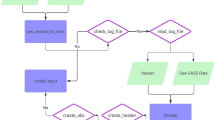Abstract
Differential global positioning system (DGPS) is important for all kinds of navigation applications which can improve the positioning accuracy from around 15 m provided by standard point service (SPS) to about 1–2 m. It uses a network of continuous operating reference station (CORS) with known positions and broadcasts the correction between the measured satellite pseudoranges and actual (internally computed) pseudoranges, and receiver stations may correct their pseudoranges by the same amount. Hence, in order to implement DGPS, the raw pseudorange measurements of the receiver are required. It is not a problem for general GPS receivers, but for mobile devices with an integrated GPS chip, it is not feasible as the raw pseudorange measurements cannot be accessed for most mobile devices. In order to realize DGPS on mobile, a mobile DGPS (M-DGPS) algorithm is proposed which does not require the raw pseudorange measurements. As the mobile can provide a SPS solution and the satellite names which is used to get the solution, with the correction of these satellites received from the CORS network, a position correction can be calculated. Then, the solution can be improved after applying the position correction. The algorithm is tested in different areas of Fuzhou city, China, and the results show that the new M-DGPS algorithm can improve the positioning accuracy obviously and meet the accuracy requirements of some navigation and surveying applications most of the time in urban environments.




Similar content being viewed by others
References
Ashkenazi V, Hill C, Ochieng W and Nagle J (1993) Wide-area differential GPS: a performance study. Navig J Inst Navig 40(3)
ASUS (2007) ASUS P535 user manual, 2nd edn. ASUSTeK Computers, Inc., Taipei
Brown A (1989) Extended differential GPS. Navig J Inst Navig 36(3)
El-Rabbany A (2006) Introduction to GPS—the global positioning system, 2nd edn. Artech House, London
Enge P, Kalafus R, Ruane M (1988) Differential operation of the global positioning system. IEEE Commun Mag 26(7):48–60
Farrell J, Djodat M, Barth M, Grewal M (1997) Latency compensation for differential GPS. Navig J Inst Navig 44(1):99–107
Hada H, Sunahara H, Uehara K, Murai J, Petrovski I, Torimoto H and Kawaguchi S (1999). New differential and RTK corrections service mobile users, based on the Internet. Proceedings of ION GPS’ 1999, Nashville, Tennessee, September: 14–17
Kalafus R (1986) Special committee 104 recommendations for differential GPS service. Navig J Inst Navig 3:101–116
Kee C, Parkinson B and Axelrad P (1991). Wide area differential GPS. Navi J Inst Navig 38(2)
Kleusberg A (1986). “Kinematic Relative Positioning Using GPS Code and Carrier Beat Phase Observations”. 2nd Marine Geodesy Symposium. London (UK). Peterson M (2004). Distribution of GPS-data via Internet. Reports in Geodesy and Geographical Information Systems
Kremer GT, Kalafus RM, Loomis P, Reynolds J (1990) The effect of selective availability on differential GPS corrections. Navig J Inst Navig 37(1):39–52
Landau H, Chen X, Klose S, Leandro R, Vollath U (2008) Trimble’s RTK and DGPS solutions in comparison with precise point positioning. Int Assoc Geodesy Symp 133:709–718
Loh R (1995) Seamless aviation: FAA’s wide area augmentation systems. GPS World 6(4):20–30
Loomis P, Kremer G, Reynolds J (1989) Correction algorithms for differential GPS reference stations. Navig J Inst Navig 36(2):179–193
Muellerschoen R, Bar-Server Y, Bertiger W, Stowers D (2001) NASA’s global DGPS for high-precision users. GPS World 12(1):14–20
RTCM Special Committee No. 104 (1994). “RTCM Recommended Standards for Differential NAVSTAR GPS Service”. Radio Technical Committee for Maritime Services. Paper 194-93/SC104-STD. Washington DC (USA)
Sickle J (2008) GPS for land surveyors, 3rd edn. CRC Press, Taylor & Francis Group, New York
SiRFstar III (2008) Retrieved April 20, 2009 from http://en.wikipedia.org/wiki/SiRF_III
Tien Bui D, Tran C, Pradhan B, Revhaug I, Seidu R (2014) iGeoTrans—a novel iOS application for GPS positioning in geosciences. Geocarto Int. doi:10.1080/10106049.2014.902114
Vallot L, Snyder S, Schipper B, Parker N, Spitzer C (1991) Design and flight test of a differential GPS/inertial navigation system for approach/landing guidance. Navig J Inst Navig 38(2):321–340
Weber G, Dettmering D, Gebhard H (2005) Networked transport of RTCM via internet protocol (NTRIP)—IP-streaming for real-time GNSS applications. Communications Technology Institute (CTI), University of Dortmund, Germany
Acknowledgments
The research was substantially supported by the project supported by the National 863 Plan (Grant No. 2013AA01A608), the National Science and Technology major Special Water special Project (Grant No. 2013ZX07503001-06), and the Fundamental Research Funds for the Central Universities (Grant No. 14CX02036A).
Author information
Authors and Affiliations
Corresponding author
Rights and permissions
About this article
Cite this article
Ji, S., Gao, Z. & Wang, W. M-DGPS: mobile devices supported differential global positioning system algorithm. Arab J Geosci 8, 6667–6675 (2015). https://doi.org/10.1007/s12517-014-1699-x
Received:
Accepted:
Published:
Issue Date:
DOI: https://doi.org/10.1007/s12517-014-1699-x




